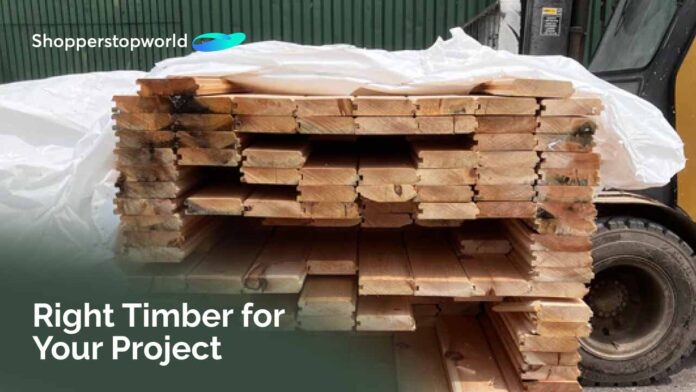Embarking on a woodworking or construction project requires careful consideration of the materials you'll use, and selecting the right timber is a critical aspect of the process. The type of timber you choose can impact the project's durability, aesthetics, and overall success. In this comprehensive guide, we will walk you through the essential factors to consider when selecting timber for your project, ensuring that you make informed decisions.
1. Understand Timber Types:
Timber comes in various types, each with its own set of characteristics and applications. Softwoods, such as pine and cedar, are commonly used for framing and outdoor projects. Hardwoods, like oak and mahogany, are known for their durability and are often chosen for furniture and indoor applications. Engineered wood, such as plywood and MDF, offers versatility and stability. Understanding the properties of each type will help you make an informed decision.
2. Consider Durability and Treatability:

The durability of timber is crucial, especially for outdoor projects. Different species exhibit varying levels of resistance to decay and insects. Consider the natural durability of the timber and whether it requires additional treatment. Pressure-treated timber is often used for outdoor applications, offering enhanced resistance to decay and pests.
3. Assess Moisture Content:
The moisture content of timber is a critical factor that can affect its stability and performance. Timber with high moisture content is more prone to warping, twisting, and shrinking as it dries. It's essential to choose timber with an appropriate moisture content for your project and consider factors like the wood's storage conditions and the climate of your location.
4. Grading and Quality:
Timber is graded based on its appearance, strength, and potential structural performance. Understanding grading codes ensures that you select timber that meets the quality standards for your specific project. Higher-grade timber is often more expensive but can offer better aesthetics and structural integrity.
5. Size and Dimensions:
Choosing the right size and dimensions of timber is crucial for achieving the desired structural integrity and aesthetics in your project. Consider the load-bearing requirements and the overall design when selecting the thickness, width, and length of the timber. Trimmed or rough-sawn options provide flexibility based on your project's needs.
6. Environmental Considerations:
In an era of increasing environmental awareness, choosing sustainably sourced timber is paramount. Look for timber that carries certification from organizations such as the Forest Stewardship Council (FSC) to ensure that the wood comes from responsibly managed forests. Sustainable choices contribute to the conservation of forests and promote environmentally friendly practices.
7. Budget Considerations:
While quality should be a priority, it's also essential to consider your budget constraints. Timber prices can vary significantly based on the species, grade, and size. Assess your project's requirements and strike a balance between cost and quality to achieve the best value for your investment.
Conclusion:
Choosing the right timber for your project involves careful consideration of various factors, from the type of wood to environmental sustainability and budget constraints. By understanding the characteristics of different timber types and evaluating your project's specific requirements, you can make informed decisions that ensure the success and longevity of your woodworking or construction endeavor. Visit Travis Perkins to explore a wide range of timber options and make the right choice for your next project.

